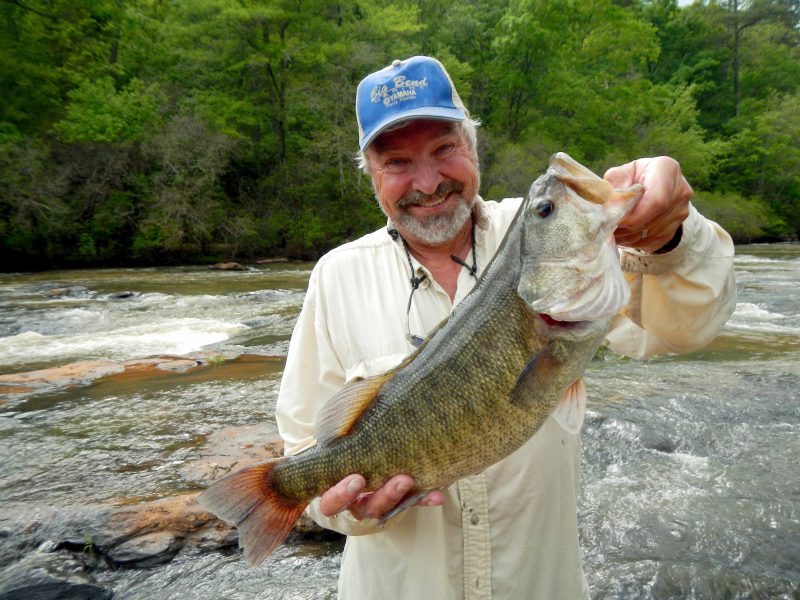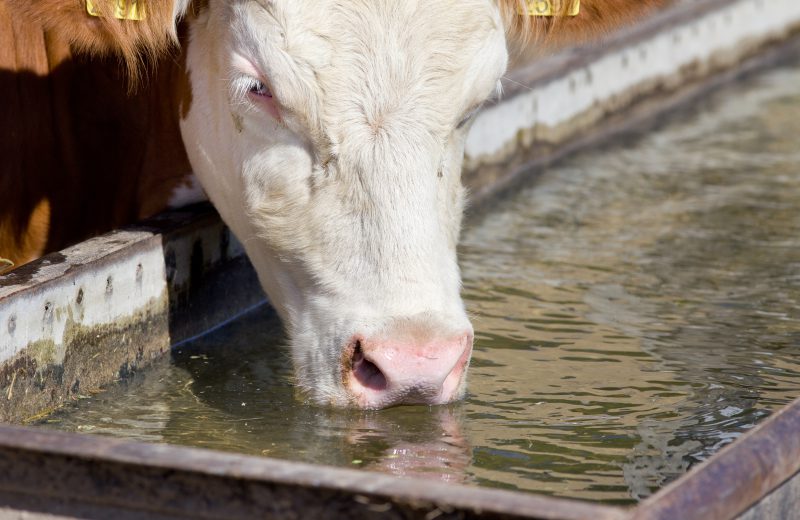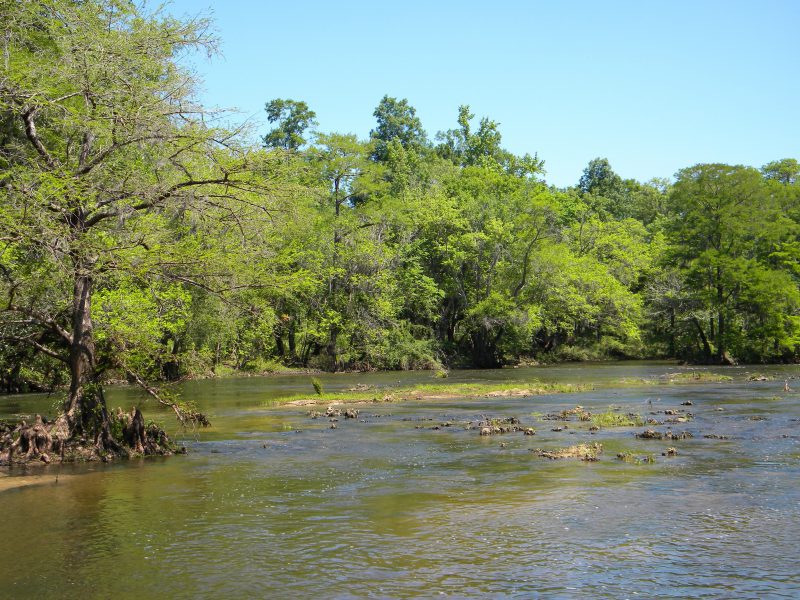Vance Crain, Southeast Aquatic Resource Partnership, and Andrea Albertin, UF/IFAS Regional Water Agent

Fisherman with a large Shoal Bass in the Apalachicola-Chattahootchee-Flint River Basin. Photo credit: S. Sammons
Along the Chipola River in Florida’s Panhandle, farmers are doing their part to protect critical Shoal Bass habitat by implementing agricultural Best Management Practices (BMPs) that reduce sediment and nutrient runoff, and help conserve water.
Florida’s Shoal Bass
Lurking in the clear spring-fed Chipola River among limerock shoals and eelgrass, is a predatory powerhouse, perfectly camouflaged in green and olive, with tiger stripes down its body. The Shoal Bass (a species of Black Bass) tips the scale at just under 6 lbs., but what it lacks in size, it makes up for in power. Unlike any other bass, and found nowhere else in Florida, anglers travel long distances for a chance to pursue this trophy. Floating along the swift current, rocks, and shoals will make you feel like you’ve been transported hundreds of miles away to the Georgia Piedmont, and it’s only the Live Oaks and palms overhanging the river that remind you that you’re still in Florida, and in a truly unique place.
Native to only one river basin in the world, the Apalachicola-Chattahoochee-Flint (ACF) River Basin, habitat loss is putting this species at risk. The Shoal Bass is a fluvial specialist, which means it can only survive in flowing water. Dams and reservoirs have eliminated habitat and isolated populations. Sediment runoff into waterways smothers habitat and prevents the species from reproducing.
In the Chipola River, the population is stable but its range is limited. Some of the most robust Shoal Bass numbers are found in a 6.5-mile section between the Peacock Bridge and Johnny Boy boat ramp. The Florida Fish and Wildlife Conservation Commission has turned this section into a Shoal Bass catch and release only zone to protect the population. However, impacts from agricultural production and ranching, like erosion and nutrient runoff can degrade the habitat needed for the Shoal Bass to spawn.
Shoal Bass habitat conservation and BMPs
In 2010, the Southeast Aquatic Resources Partnership (SARP), the National Fish and Wildlife Foundation and a group of scientists (the Black Bass Committee) developed the Native Black Bass Initiative. The goal of the initiative is to increase research and the protection of three Black Bass species native to the Southeast, including the Shoal Bass. It also defined the Shoal Bass as a keystone species, meaning protection of this apex predators’ habitat benefits a host of other threatened and endangered species.
Along the Chipola River, farmers are teaming up with SARP and other partners to protect Shoal Bass habitat and improve farming operations through BMP implementation. A major goal is to protect the river’s riparian zones (the areas along the river’s borders). When healthy, these areas act like sponges by absorbing nutrients and sediment runoff. Livestock often degrade riparian zones by trampling vegetation and destroying the stream bank when they go down to a river to drink. Farmers are installing alternative water supplies, like water wells and troughs in fields, and fencing out cattle from waterways to protect these buffer areas and improve water quality. Row crop farmers are helping conserve water in the river basin by using advanced irrigation technologies like soil moisture sensors to better inform irrigation scheduling and variable rate irrigation to increase irrigation efficiency. Cost-share funding from SARP, the USDA-NRCS and FDACS provide resources and technical expertise for farmers to implement these BMPs.

Cow drinking from a water trough in the field, instead of going down to the river to get water which can cause erosion and problems with water quality. Photo credit: V Crain
By working together in the Chipola River Basin, farmers, fisheries scientists, and resource managers are helping ensure that critical habitat for Shoal Bass remains healthy. Not only is this important for the species and resource, but it will ensure that future generations can continue to enjoy this unique river and see these fish. So the next time you catch a Shoal Bass, thank a farmer.
Contact Information
For more information about BMP implementation and cost-share opportunities available for farmers and ranchers in the Florida Panhandle, contact your local FDACS Agriculture Water Policy Staff and USDA-NRCS field office. For questions regarding the Native Black Bass Initiative or Shoal Bass habitat conservation, contact Vance Crain, who is a fisheries biologist and the Native Black Bass Initiative Coordinator for the Southeast Aquatic Resource Partnership (SARP), which is based in Panama City, Florida.
- What to Do if Sinkholes Open on Your Property - November 15, 2024
- Crop Farmers Implementing BMPs in the Chipola River Basin - May 24, 2024
- The Granberry Farm: Sustainably Managing a Cattle Ranch in the Chipola River Basin - January 5, 2024

